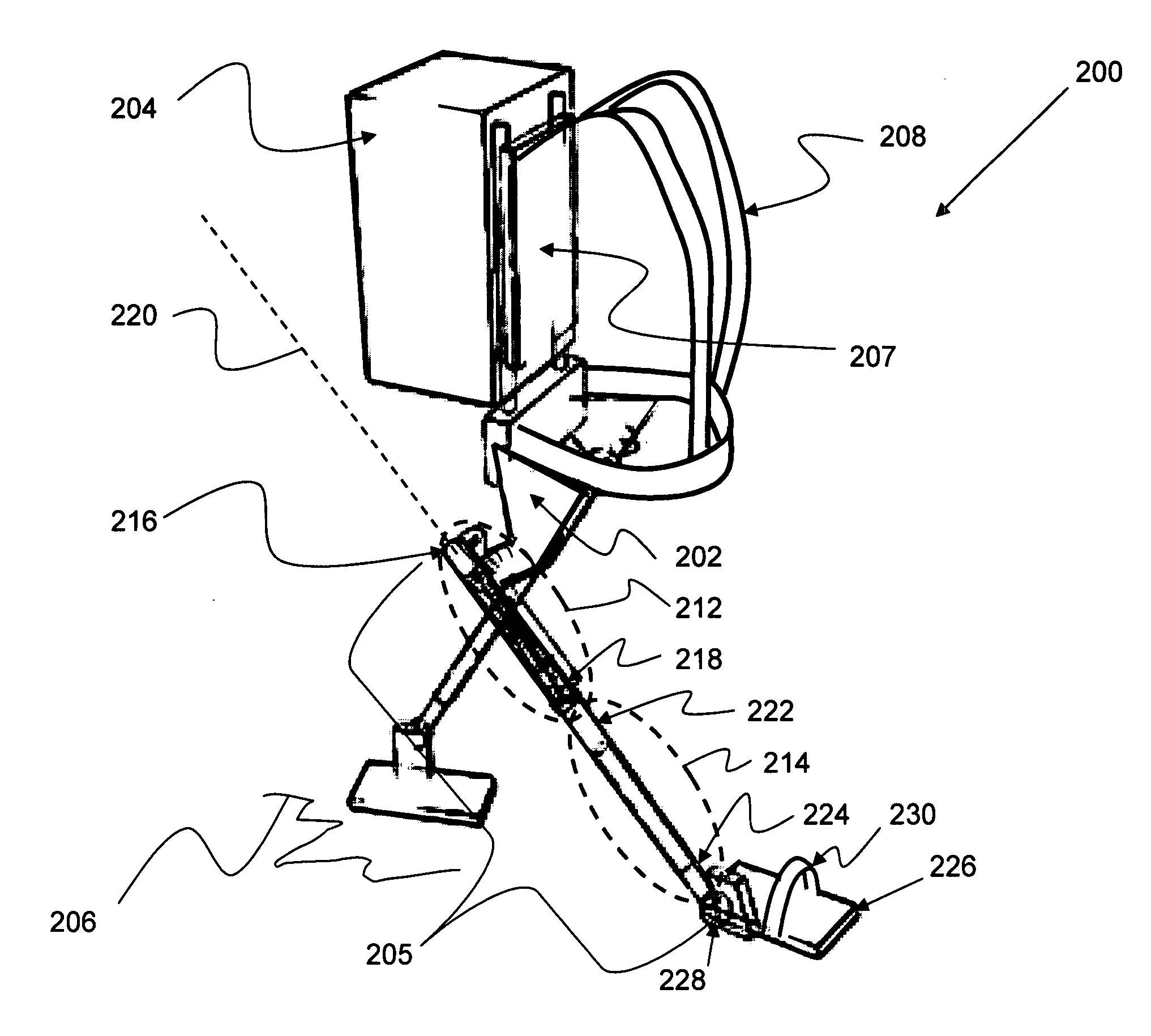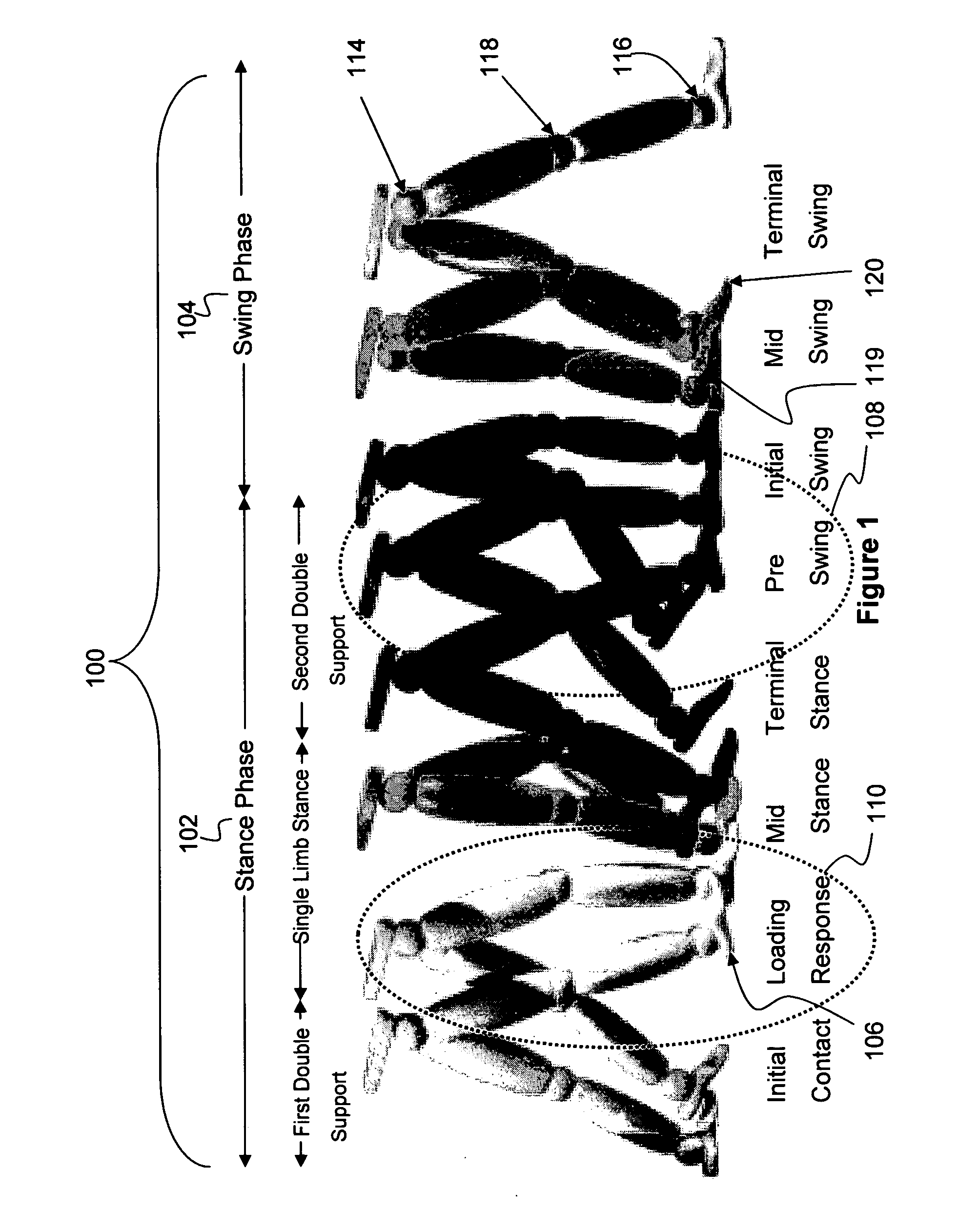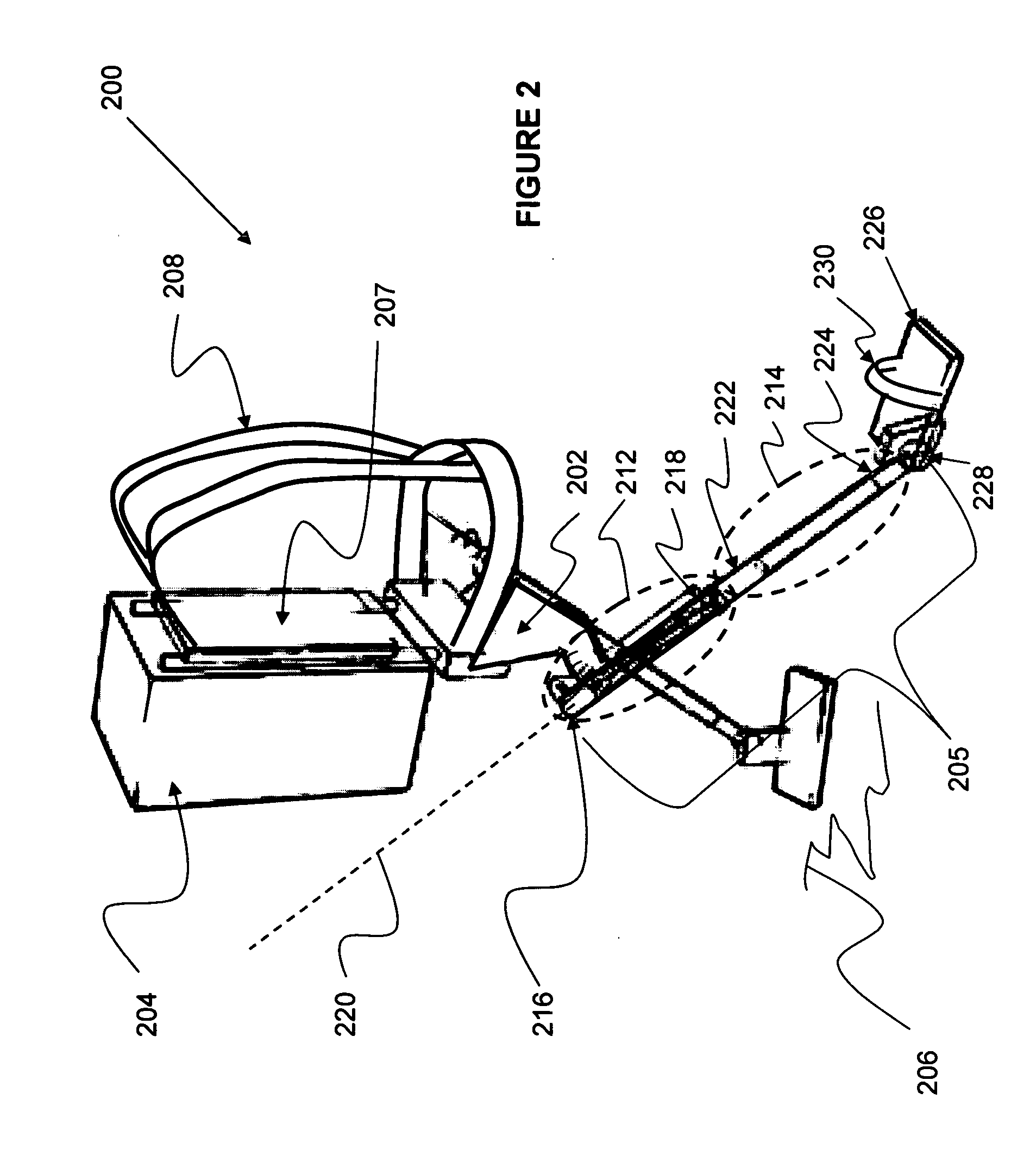Passive exoskeleton
a passive, exoskeleton technology, applied in the direction of rocking horses, arms wearables, instruments, etc., can solve the problems of limited amount of weight an individual may carry using a traditional backpack, inconvenient use of devices, and forcing the individual to ultimately bear the burden of load
- Summary
- Abstract
- Description
- Claims
- Application Information
AI Technical Summary
Benefits of technology
Problems solved by technology
Method used
Image
Examples
Embodiment Construction
[0071] The present invention relates to a load bearing apparatus, and more particularly, to a passive exoskeleton that permits a load to be placed on the passive exoskeleton for at least a portion of the weight of the load to be transferred directly from the passive exoskeleton to a ground surface, causing the passive exoskeleton to support at least a portion of the load.
[0072] The following description, taken in conjunction with the referenced drawings, is presented to enable one of ordinary skill in the art to make and use the invention. Various modifications will be readily apparent to those skilled in the art, and the general principles defined herein may be applied to a wide range of aspects. Thus, the present invention is not intended to be limited to the aspects presented, but is to be accorded the widest scope consistent with the principles and novel features disclosed herein. Furthermore, it should be noted that unless explicitly stated otherwise, the figures included here...
PUM
 Login to View More
Login to View More Abstract
Description
Claims
Application Information
 Login to View More
Login to View More - R&D
- Intellectual Property
- Life Sciences
- Materials
- Tech Scout
- Unparalleled Data Quality
- Higher Quality Content
- 60% Fewer Hallucinations
Browse by: Latest US Patents, China's latest patents, Technical Efficacy Thesaurus, Application Domain, Technology Topic, Popular Technical Reports.
© 2025 PatSnap. All rights reserved.Legal|Privacy policy|Modern Slavery Act Transparency Statement|Sitemap|About US| Contact US: help@patsnap.com



